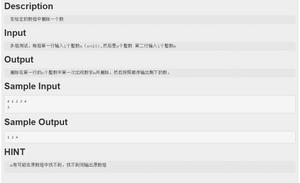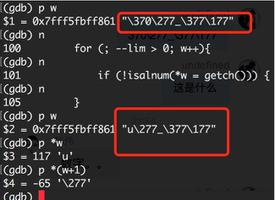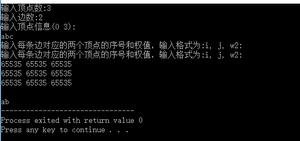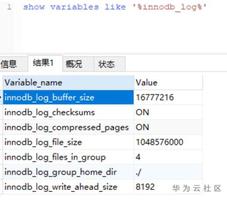关于多商品优惠的算法问题,有大佬算法厉害的吗?
大致的思路是这样的,先计算单个商品的多件折扣先,然后得出每个商品的总价格
折扣类型的优惠不需要混合计算,只需要单个商品计算即可,主要是满减优惠,是多商品组合计算的
然后根据每个商品享受的公共满减优惠,组合出最大的优惠,优惠过的商品不能再和其他的商品优惠
有没有大佬用JavaScript或者java实现一遍,救救孩子吧
图片看不清楚可以点击这个看大图
https://image-static.segmentf...

数据库的数据是这样子的
let { multiply } = require("mathjs");let tb_goods = [
{
id: 1,
goodsName: "A",
price: 10,
// 绑定的优惠折扣
spceList: [101, 102, 105],
},
{
id: 2,
goodsName: "B",
price: 6,
spceList: [101, 102, 105, 106],
},
{
id: 3,
goodsName: "C",
price: 7,
spceList: [101, 103, 107],
},
{
id: 4,
goodsName: "D",
price: 7,
spceList: [101, 104, 107],
},
];
let tb_spce = [
{
id: 101,
type: "满减",
msg: "满20减2",
full: 20,
reduction: 2,
},
{
id: 102,
type: "满减",
msg: "满35减6",
full: 35,
reduction: 6,
},
{
id: 103,
type: "满减",
msg: "满28减3",
full: 28,
reduction: 3,
},
{
id: 104,
type: "满减",
msg: "满30减5",
full: 30,
reduction: 5,
},
{
id: 105,
type: "折扣",
msg: "2件9.5折",
full: 2,
reduction: 0.95,
},
{
id: 106,
type: "折扣",
msg: "3件7折",
full: 3,
reduction: 0.7,
},
{
id: 107,
type: "折扣",
msg: "2件8折",
full: 2,
reduction: 0.8,
},
];
// 测试购买的商品,3个A,6个B,3个C
let testBuy = [
{
goodsId: 1,
num: 3,
},
{
goodsId: 2,
num: 6,
},
{
goodsId: 3,
num: 3,
},
];
testBuy.map((buyItem) => {
// 先找到购买的这个商品的数据
let goodsInfo = tb_goods.find((goodsItem) => goodsItem.id == buyItem.goodsId);
// 得到这个商品的折扣优惠数据
let spceList = [];
tb_spce.filter((spceItem) => {
if (goodsInfo.spceList.includes(spceItem.id)) {
spceList.push(spceItem);
}
});
// 得出总价
let money = multiply(goodsInfo.price, buyItem.num);
// 备用的总价,为了计算折扣使用
let money2 = multiply(goodsInfo.price, buyItem.num);
spceList.map((spceItem) => {
// 是折扣类型的
if (spceItem.type === "折扣") {
// 满足大于x件
if (buyItem.num >= spceItem.full) {
console.log(spceItem.reduction);
let reducMoney = multiply(money2, spceItem.reduction);
if (reducMoney < money) {
money = reducMoney;
}
}
}
buyItem.money = money;
});
});
console.log(testBuy);
// [
// { goodsId: 1, num: 3, money: 28.5 },
// { goodsId: 2, num: 6, money: 25.2 },
// { goodsId: 3, num: 3, money: 16.8 }
// ]
// 最后得出这段数据,然后再次根据多个商品组合出来的满减优惠得出总价格
回答:
组合优惠卷问题,基础算法可以使用 回溯法 遍历所有可能性。
下面是参照你的数据格式写的算法,返回结果格式如下:
{ // 最终折扣后价格
total: 93.1,
// 满减总金额
discount: 11,
// 使用的满减组合策略
// 以下表示 商品 1,2 采用 102 满减组合,减了 6 元;
// 商品 4 可以独立使用 104 满减, 减了 5 元;
// 一共减了 11 元;
compose: [
[
// 商品ID, 满减金额,自身折扣后金额,满减优惠 ID
[1, 6, 28.5, 102],
[2, 6, 25.2, 102],
],
[[4, 5, 33.6, 104]],
],
}
let tb_goods = [ {
id: 1,
goodsName: "A",
price: 10,
// 绑定的优惠折扣
spceList: [101, 102, 105],
},
{
id: 2,
goodsName: "B",
price: 6,
spceList: [101, 102, 105, 106],
},
{
id: 3,
goodsName: "C",
price: 7,
spceList: [101, 103, 107],
},
{
id: 4,
goodsName: "D",
price: 7,
spceList: [101, 104, 107],
},
];
let tb_spce = [
{
id: 101,
type: "满减",
msg: "满20减2",
full: 20,
reduction: 2,
},
{
id: 102,
type: "满减",
msg: "满35减6",
full: 35,
reduction: 6,
},
{
id: 103,
type: "满减",
msg: "满28减3",
full: 28,
reduction: 3,
},
{
id: 104,
type: "满减",
msg: "满30减5",
full: 30,
reduction: 5,
},
{
id: 105,
type: "折扣",
msg: "2件9.5折",
full: 2,
reduction: 0.95,
},
{
id: 106,
type: "折扣",
msg: "3件7折",
full: 3,
reduction: 0.7,
},
{
id: 107,
type: "折扣",
msg: "2件8折",
full: 2,
reduction: 0.8,
},
];
const compute = (goods = []) => {
const disGoodsMap = new Map();
let total = 0;
for (let good of goods) {
const g = tb_goods.find((g) => good.goodsId === g.id);
good.price = g.price;
good.totalPrice = g.price * good.num;
good.totalDisPrice = good.totalPrice;
g.spceList.forEach((id) => {
let ts = tb_spce.find((s) => s.id === id);
if (ts.type === "折扣") {
if (!ts || good.num < ts.full) return;
good.totalDisPrice =
Math.round(Math.min(good.totalDisPrice, good.totalPrice * ts.reduction) * 100) / 100;
} else {
let gs = disGoodsMap.get(ts);
if (!gs) {
gs = [];
disGoodsMap.set(ts, gs);
}
gs.push(good);
}
});
total += good.totalDisPrice;
}
const compose = [];
disGoodsMap.forEach((v, k) => {
disComposeBacktrace(0, v, k.full, k.reduction, [], compose, k.id);
});
const res = { total: total, discount: 0, compose: [] };
composeBacktrace(0, compose, [], new Set(), res, 0);
res.total = res.total - res.discount;
return res;
};
const composeBacktrace = (start, composes, trace, memo, res, discount) => {
if (discount > res.discount) {
res.discount = discount;
res.compose = [...trace];
}
for (let i = start; i < composes.length; i++) {
const cmp = composes[i];
if (cmp.some((c) => memo.has(c[0]))) continue;
trace.push(cmp);
cmp.forEach((c) => memo.add(c[0]));
composeBacktrace(i + 1, composes, trace, memo, res, discount + cmp[0][1]);
trace.pop();
cmp.forEach((c) => memo.delete(c[0]));
}
};
const disComposeBacktrace = (start, goods, target, discount, memo = [], res = [], disId) => {
if (target <= 0) {
res.push([...memo]);
return;
}
for (let i = start; i < goods.length; i++) {
const g = goods[i];
memo.push([g.goodsId, discount, g.totalDisPrice, disId]);
disComposeBacktrace(i + 1, goods, target - g.totalDisPrice, discount, memo, res, disId);
memo.pop();
}
};
const demo1 = [
{ goodsId: 1, num: 3 },
{ goodsId: 3, num: 3 },
];
const demo2 = [
{ goodsId: 1, num: 3 },
{ goodsId: 2, num: 6 },
{ goodsId: 3, num: 3 },
];
const demo3 = [
{ goodsId: 1, num: 3 },
{ goodsId: 2, num: 6 },
{ goodsId: 3, num: 3 },
{ goodsId: 4, num: 6 },
];
const demo4 = [
{ goodsId: 1, num: 3 },
{ goodsId: 3, num: 6 },
];
const demo5 = [
{ goodsId: 1, num: 3 },
{ goodsId: 3, num: 4 },
];
const demo6 = [
{ goodsId: 1, num: 2 },
{ goodsId: 2, num: 2 },
{ goodsId: 3, num: 2 },
{ goodsId: 4, num: 1 },
];
const demo7 = [
{ goodsId: 1, num: 1 },
{ goodsId: 3, num: 6 },
];
const res1 = compute(demo1);
console.log(JSON.stringify(res1));
// {"total":43.3,"discount":2,"compose":[[[1,2,28.5,101]]]}
const res2 = compute(demo2);
console.log(JSON.stringify(res2));
// {"total":64.5,"discount":6,"compose":[[[1,6,28.5,102],[2,6,25.2,102]]]}
const res3 = compute(demo3);
console.log(JSON.stringify(res3));
// {"total":93.1,"discount":11,"compose":[[[1,6,28.5,102],[2,6,25.2,102]],[[4,5,33.6,104]]]}
const res4 = compute(demo4);
console.log(JSON.stringify(res4));
// {"total":57.1,"discount":5,"compose":[[[1,2,28.5,101]],[[3,3,33.6,103]]]}
const res5 = compute(demo5);
console.log(JSON.stringify(res5));
// {"total":46.9,"discount":4,"compose":[[[1,2,28.5,101]],[[3,2,22.4,101]]]}
const res6 = compute(demo6);
console.log(JSON.stringify(res6));
// {"total":44.599999999999994,"discount":4,"compose":[[[1,2,19,101],[4,2,7,101]],[[2,2,11.4,101],[3,2,11.2,101]]]}
const res7 = compute(demo7);
console.log(JSON.stringify(res7));
// {"total":40.6,"discount":3,"compose":[[[3,3,33.6,103]]]}
回答:
策略模式适用你这种场景,可以去了解一下
以上是 关于多商品优惠的算法问题,有大佬算法厉害的吗? 的全部内容, 来源链接: utcz.com/p/933720.html









